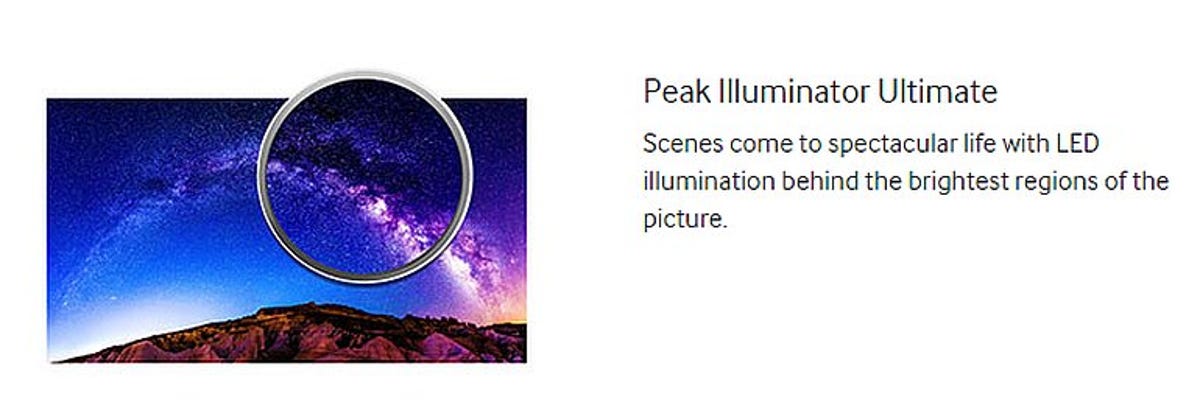Samsung has launched several new, expensive televisions under the “SUHD” name, and we’ve received a few questions from readers wondering what it means.
UHD is the official industry term for Ultra High Definition, which is the less-popular way to say ” 4K.” So what is “S” UHD? Super UHD? Spectacular UHD? Sassy UHD? Perhaps just Samsung UHD?
Samsung’s official answer is that the S doesn’t stand for a specific word. Rather, according to the rep we spoke to, “Samsung reserves the ‘S’ (in SUHD) identification for their flagship products that change the game, like the groundbreaking 2015 SUHD TV portfolio or their Galaxy S and so on.”
Alrighty then. So what makes an SUHD TV different from any other TV? Glad you asked.
Related stories
- Samsung prices 2015 SUHD TVs
- JS9500 SUHD TV preview
- JS8500 SUHD TV preview
- Improving the LCD
- LED LCD backlights explained
LED TV all over again
OK, here’s the short version: SUHD is nothing more than a high-end 2015 Samsung LCD TV with 4K/UHD resolution and a specific set of features. But those features are actually pretty interesting; we’ll discuss them below.
In an effort to curtail this latest bout of marketing obfuscation, however, we first wanted to make it clear that unlike, say, plasma or OLED TV, “SUHD” is not a separate display technology.
At their heart, SUHD TVs all utilize LCD technology. Specifically, they are all LED-backlit LCD televisions with Ultra HD 4K resolution. And most have curved screens.
Now for the interesting part.
Like many of the new high-end TVs this year, Samsung’s “SUHD” models have several new features that could improve the picture quality of LCD. Samsung has its own name for several of them, so we’ll highlight the two most important here.
Nano-crystal technology


Samsung
Quantum dots is the coolest name for a TV technology to come out in literally ever. Samsung has created its own name for the same thing: Nano-Crystal technology, found on every Samsung SUHD TV in 2015 (but not on any of Samsung’s non-SUHD TVs).
What they do is even cooler. LED backlights enhanced by quantum dots or nanocrystals can actually expand how many colors appear, and how rich they look. They can somewhat improve TVs’ color with today’s sources, but the main benefit won’t be realized until wide color gamut content becomes more common over the next few years, for example with the advent of 4K Blu-ray. Check out Quantum dots: How nanocrystals can make LCD TVs better for more info.
Sony calls its nanocrystal technology Triluminous, while LG has decided to dub its latest wide-gamut technology Prime UHD.
Peak Illuminator Ultimate / Peak Illuminator Pro


Samsung
High Dynamic Range (HDR) is designed to enhance contrast, the most important picture quality characteristic. Much brighter TVs, combined with 10-bit LCD panels and specialized HDR content, should create significantly more realistic images.
Much like with expanded color gamuts, HDR content isn’t widely available yet, but will arrive with 4K Blu-ray and streaming sources like Netflix and Amazon, both of which will deliver HDR later this year.
Samsung is calling its version of HDR Peak Illuminator Ultimate or Pro. Ultimate, found in the very expensiveJS9500 curved series of SUHD TVs, employs true full-array local dimming. Pro indicates edge-lit local dimming, found in the cheaper (but still pretty expensive) JS9000 curved and JS8500 flat SUHD TVs.
Check out High Dynamic Range arrives and High Dynamic Range: Dolby Vision, X-tended Dynamic Range Pro, and beyond for more. And in case you’re curious, no SUHD TV will be compatible with Dolby Vision HDR content. The only TV announced so far that will be is Vizio’s Reference series .
Bottom line
Samsung (followed by others) successfully convinced millions of people that “LED TVs” were a new type of television, separate from “LCD.” It was an impressive marketing feat, given that all “LED TVs” were actually LCDs.
It’s unlikely Samsung will get the same traction with “SUHD,” but we figured it was worth mentioning now, early on, that these TVs are a new flavor of LCD technology, too. They offer some promising new innovations, to be sure, but the new name doesn’t mean it’s a wholly distinct display technology.
Then again, marketing its proprietary enhancements doesn’t seem to hurt Samsung’s sales.
Got a question for Geoff? First, check out all the other articles he’s written on topics such as why all HDMI cables are the same, LED LCD vs. OLED, why 4K TVs aren’t worth it and more. Still have a question? Tweet at him@TechWriterGeoff then check out his travel photography on Instagram. He also thinks you should check out his sci-fi novel and its sequel.


Now playing:
Watch this:
Stop your Samsung Smart TV from spying on you
1:28




